About Chattogram
Chittagong officially known as Chattogram, is a major coastal city and financial centre in south-eastern Bangladesh. The city has a population of more than 2.5 million while the metropolitan area has a population of 4,009,423 at the 2011 Census, making it the second largest city in the country. The total are of the Chattogram district is 5282.98 sq km. The city is located on the banks of the Karnaphuli River between the Chattogram Hill Tracts and the Bay of Bengal. The port city has been known by various names in history, including Chatigaon, Chatigam, Chattagrama, Islamabad, Chattala, Chaityabhumi and Porto Grande De Bengala.
Overview of Chattogram city
The natural harbour of Chattogram is an ancient gateway to the region of Bengal. It was noted as one of the largest Eastern ports by the Roman geographer Ptolemy in the 1st century. As part of the rich seafaring tradition of the Bengali people, coastal Chattogram was settled and ruled by different regional kingdoms. Arab traders saw well-developed currency, banking and shipping in Chattogram during the 9th century. Early cosmopolitan Muslims established dominance over the port as an entrepot of maritime trade, while Arakan, Bengal and Tripura competed for control of the wider hinterland. Chattogram became the principal port of the Bengal Sultanate. It was used by several leading medieval global explorers, including Ibn Battuta and Niccolò de’ Conti. Later, Mrauk U, with assistance from Portuguese trading posts, gained control of the area. The Mughal conquest of Chattogram re-established Bengali control and ushered an era of stability and trade. The city was renamed as Islamabad. This diverse history is reflected in the rural Chittagonian dialect of Bengali, which has a nearly 50% Arabic-origin vocabulary, as well as Persian and Portuguese loanwords.
Ceded to the British East India Company in 1760, Chattogram became the chief port of Eastern Bengal and Assam under the British Raj, as well as a hub of railways. A notable anti-colonial uprising took place in 1930. It was an important base for Allied Forces during the Burma Campaign in World War II. Rapid industrialization followed the war, as Chattogram became part of East Pakistan. During the Bangladesh liberation war in 1971, Chattogram was site of the country’s declaration of independence.
Modern Chattogram is an important economic hub in South Asia. It is home to the Chattogram Stock Exchange and many of Bangladesh’s oldest and largest companies. The Port of Chattogram is the largest international seaport on the Bay of Bengal. It is the largest base of the Bangladesh Navy.
Chattogram has a population of more than 2.5 million and its Metropolitan Area has a population of 4,009,423.By gender, the population was 54.36% male and 45.64% female, and the literacy rate in the city was 60 percent, in 2002.Muslims at 86% form the overwhelming majority of the population and rest being 12% Hindus and 2% other religions.
The city also has many ethnic minorities, especially members of indigenous groups from the frontier hills of Chattogram Division, including Chakmas, Rakhines and Tripuris; as well as Rohingya refugees. The Bengali-speaking Theravada Buddhists of the area, known as Baruas, are one of the oldest communities in Chattogram and one of the last remnants of Buddhism in Bangladesh. Descendants of Portuguese settlers, often known as Firingis, also live in Chattogram, as well as Catholics, who largely live in the old Portuguese enclave of Paterghatta. There is also a small Urdu-speaking Bihari community living in the ethnic enclave known as Bihari Colony.
Chattogram has been a seaport since ancient times. The region was home to the ancient Bengali Buddhist Samatata and Harikela states. It later fell under of the rule of the Gupta Empire, the Pala Empire and the Vesali kingdom of Arakan till the 7th century. Arabs traded with the port from the 9th century AD. An account by historian Lama Taranath has revealed a Buddhist king Gopichandra had his capital at Chattogram in the 10th century, and according to Tibetan tradition, Chattogram was the birthplace of 10th century Buddhist Tantric Tilayogi.
Sultan Fakhruddin Mubarak Shah of Sonargaon conquered Chattogram in 1340 AD.Sultan Giasuddin Mubarak Shah constructed a highway from Chattogram to Chandpur and ordered the construction of many lavish mosques and tombs. After the defeat of Mahmud Shah in the hands of Sher Shah in 1538, the Arakanese Kingdom of Mrauk U regained Chattogram. From this time onward, until its conquest by the Mughals, this region was under the control of the Portuguese and the Magh pirates (a notorious name for Arakanese) for 128 years.
After the Arakanese expulsion, Islamabad, as the area came to be known, made great strides in economic progress. What is called Chattogram today also began to have improved connections with the rest of Mughal Bengal. The city was occupied by Burmese troops shortly in First Anglo-Burmese War in 1824 and the British increasingly grew active in the region and it fell under the British Empire. The people of Chattogram made several attempts to gain independence from the British, notably on 18 November 1857 when the 2nd, 3rd, and 4th companies of the 34th Bengal Infantry Regiment stationed at Chattogram rose in rebellion and released all the prisoners from jail but were suppressed by the Kuki scouts and the Sylhet Light Infantry (10th Gurkha Rifles).
Places to visit in Chattogram
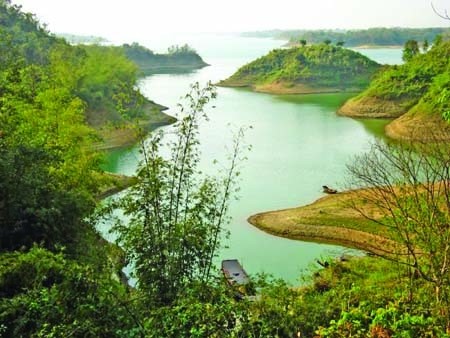
Kaptai Lake
Kaptai Lake is the largest man made lake in Bangladesh. It is located in the Kaptai Upazila under Rangamati District of Chattogram Division.
The lake was created as a result of building the Kaptai Dam on the Karnaphuli River, as part of the Karnaphuli electric project. The Kaptai Lake’s average depth is 100 feet (30 m) and maximum depth is 490 feet (150 m).
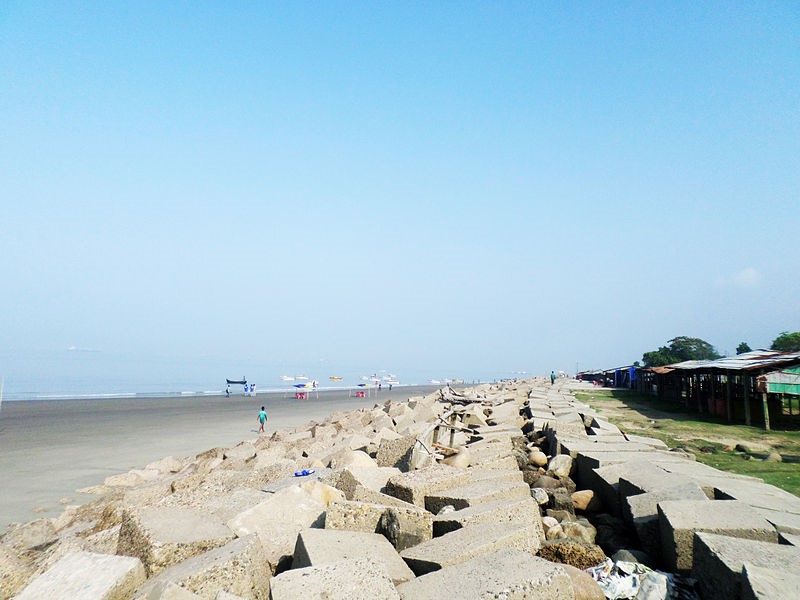
Patenga Sea Beach
Patenga is a sea beach located 14 kilometres south of the port city of Chattogram, Bangladesh. It is near the mouth of the Karnaphuli River. It is a popular tourist spot.
The beach is very close to the Bangladesh Naval Academy of the Bangladesh Navy and Shah Amanat International Airport. Its width is narrow and swimming in the seas is not recommended. Part of the seashore is built-up with concrete walls, and large blocks of stones have been laid to prevent erosion. During the 1990s, a host of restaurants and kiosks sprouted out around the beach area. Lighting of the area has enhanced the security aspect of visiting at night. Most visitors come to Patenga Beach as it is known for having some of the most stunning sunsets and sunrises in Bangladesh.
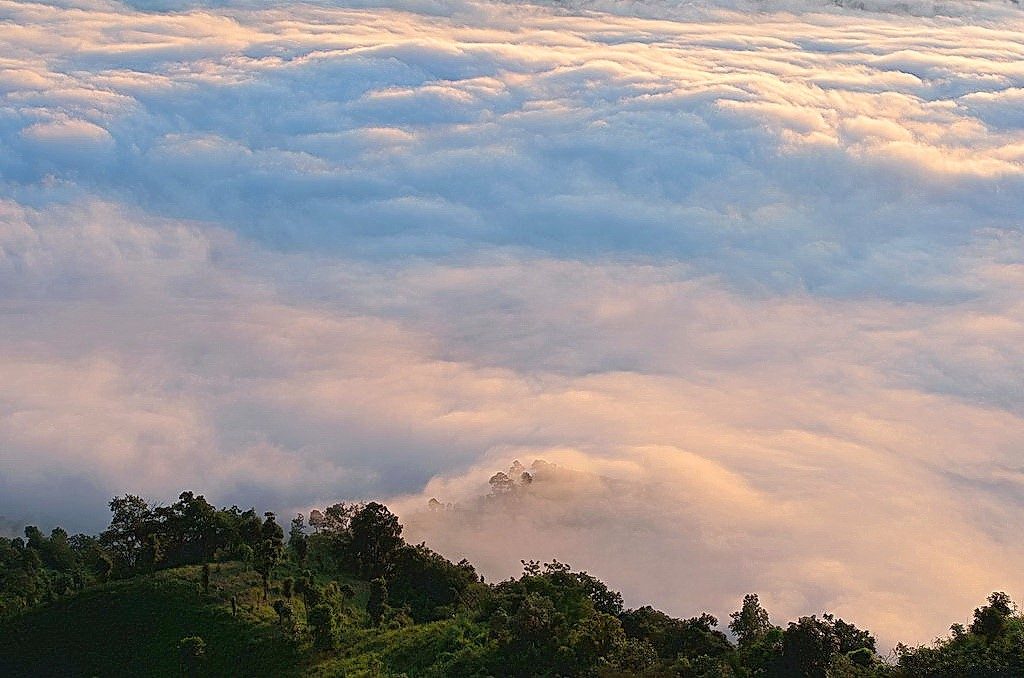
Bandarban
Bandarban (Bengali: বান্দরবান) is a district in South-Eastern Bangladesh, and a part of the Chattogram Division. It is one of the three hill districts of Bangladesh and a part of the Chattogram Hill Tracts, the others being Rangamati District and Khagrachhari District.
Bandarban (meaning the dam of monkeys), or in Marma or Arakanese language as “Rwa-daw Mro” is also known as Arvumi or the Bohmong Circle. Bandarban town is the home town of the Bohmong Chief (currently King, or Raja, U Cho Prue Marma) who is the head of the Marma population. Bandarban is regarded as one of the most attractive travel destinations in Bangladesh.
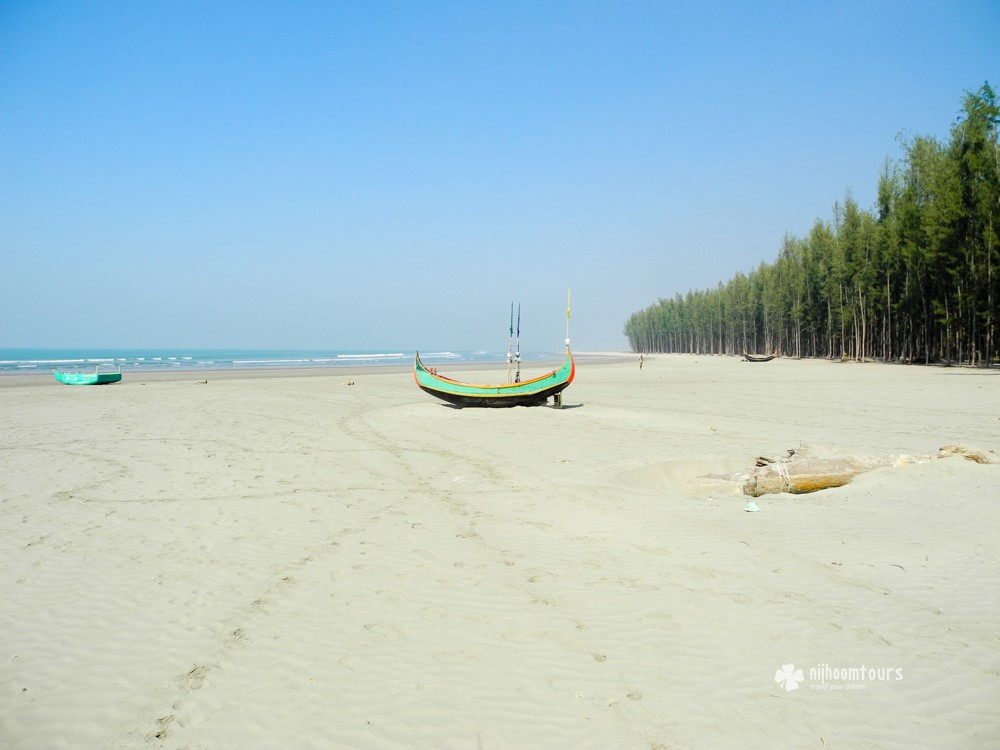
Cox’s Bazar
Cox’s Bazar is a city, fishing port, tourism centre and district headquarters in south-eastern Bangladesh.
The beach in Cox’s Bazar is sandy and has a gentle slope; with an unbroken length of 120 km (75 mi), it is the longest natural sea beach in the world. It is located 150 km (93 mi) south of the divisional headquarter of Chattogram. Cox’s Bazar is also known by the name Panowa, which translates literally as “yellow flower”. Another old name was “Palongkee”.
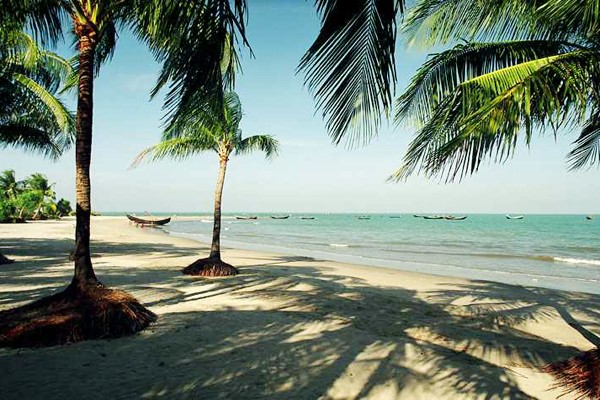
St. Martin
St. Martin is a small island (area only 8 km2) in the north-eastern part of the Bay of Bengal, about 9 km south of the tip of the Cox’s Bazar-Teknaf peninsula, and forming the southernmost part of Bangladesh.
During British occupation the island was named St. Martin Island. The local names of the island are “Narikel jinjira” which means ‘Coconut Island’ in Bengali, and “Daruchini Dwip” which means “Cinnamon island” in Bengali. It is the only coral island in Bangladesh.
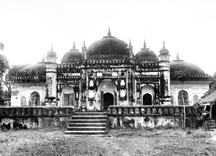
Kadam Mubarak Mosque
Kadam Mubarak Mosque is located at Jamal khan ward of Chattogram City Corporation.
The locality adjacent to this mosque is known as Kadam Mubarak, deriving the appellation from the two holy footprints on stone preserved in a room contiguous to the prayer chamber of the mosque. From an inscription it is known that Muhammad Yasin, a local built this mosque in AH 1156 (AD 1723) during the reign of Mughal emperor Muhammad Shah.
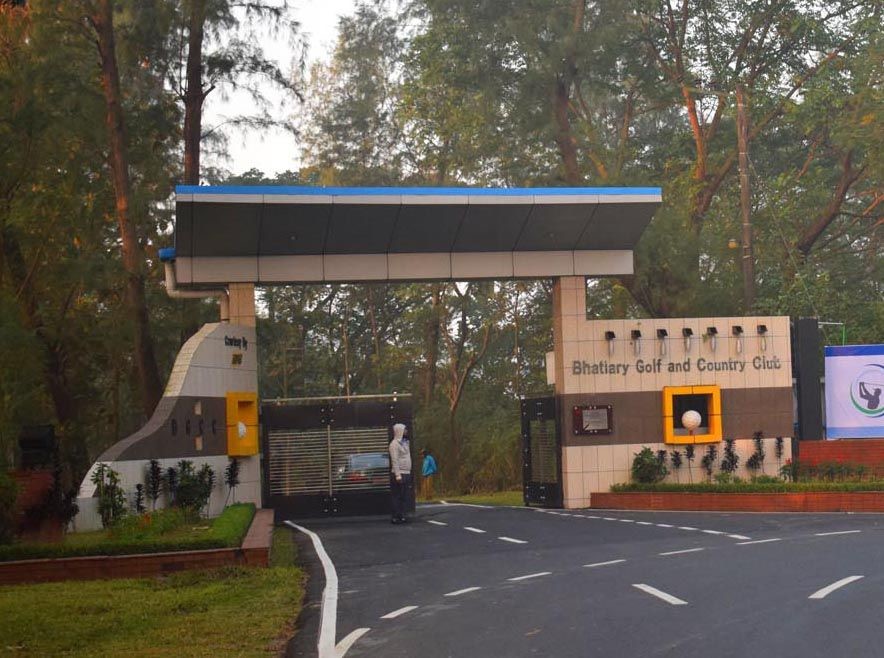
Bhatiary
Bhatiary is famous for its natural beauty. The main tourism spot of Bhatiary is the hills. People from all sphere of life gather here in afternoon for seeing the sunset from top of the hill.
The Hathazari-Bhatiary linked road is also an attraction for the tourist. By using that road, anyone can go to Rangamati or Khagrachari in shortcut way. This road is looked after by the Bangladeshi Army. There is also a golf club in Bhatiary area which has also became a tourist attraction in the last decade.
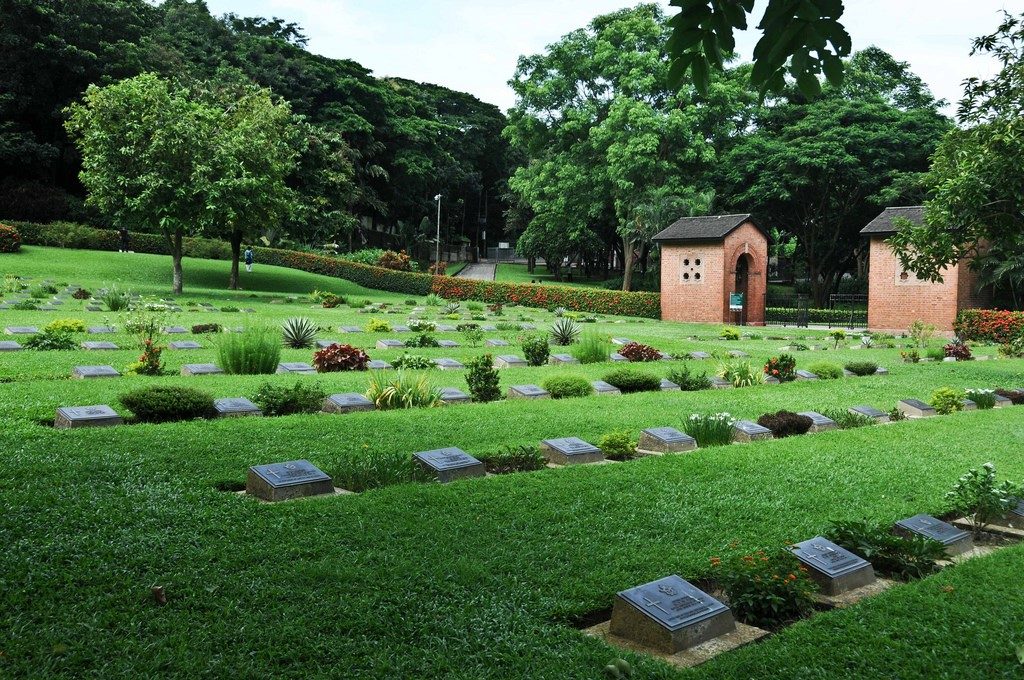
Chattogram War Cemetery
Chattogram War Cemetery was established to show the honour for the soldiers and others who died in World War II.
The cemetery was created by the British Army, and there were originally about 400 burials. Graves have since been transferred to this cemetery from the Lushai Hills (Assam) and other isolated sites, and from Chittagong Civil Cemetery. There are now 731 Commonwealth burials of the 1939-45 war here, 17 of which are unidentified. There are a further 20 foreign national burials, 1 being a seaman of the Dutch Navy and 19 Japanese soldiers, 1 of which is unidentified. There are also 4 non-war U.K. military burials.
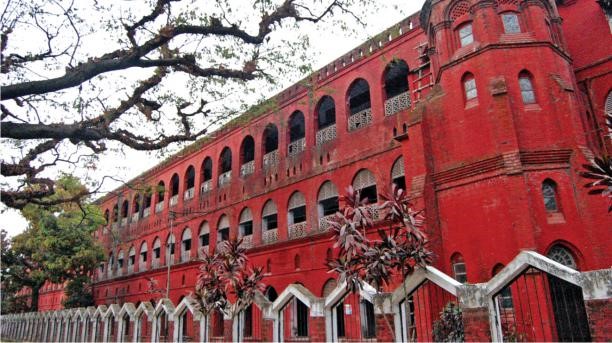
Central Railway Building
Central Railway Building (CRB) is situated in the scenic hilly area of Chattogram, Bangladesh. It is the governing office for the general manager of Bangladesh Railway.
The building was completed in 1872; it is one of the oldest buildings of the port city. The Central Railway Building is one of the few remaining buildings that tell the history of two hundred years of British colonial rule in Chattogram. In 1760, the British rulers took over the control of Chattogram from Nawab Mir Qasim and ruled it until 1947 before the Partition of India. During their reign the British built several buildings to facilitate their administrative works and one of those buildings is CRB.

Chattogram Circuit House
Chattogram Circuit House and Zia Memorial Museum Chattogram Circuit House and is situated near Chattogram Stadium at Kazir Dewri and 3 km. North end of the Zero point.
The house was built by British for their government’s high officials’ as there resident; this house was also used by Pakistani army as a torturing center during the liberation war of Bangladesh. Pak army killed thousands of Bangladeshi in this house. Still the building looking very good and you will taste the architecture of the then British period.
Universities of Chattogram
University of Chittagong
The University of Chittagong is a public, multidisciplinary university located in Hathazari Upazila, Chittagong District, Bangladesh. The university was established in 1966.It has approximately 22,000 students and 750 faculty members. University of Chittagong is located in Fatehpur Union, Hathazari Upazila about 22 kilometres north of the Chittagong city around 1753.88 acres of hilly and flat land. Chittagong University was founded on 3 December 1965 by Fazlul Qadir Chaudhry in Chittagong City. He was one of the main facilitators for the demand of the university.
Chittagong Medical College
Chittagong Medical College (also known as CMC) is situated in the port city of Chittagong, Bangladesh and is the oldest medical college in the south-eastern part of the country. It is affiliated with a tertiary level hospital where clinical students are trained in Medicine, Surgery, Obs & Gynae and other sub-specialties.[1] Currently, students from Bhutan, India, Iran, Malaysia, Nepal, Palestine, Pakistan, and Sri Lanka are studying in various phases of MBBS course alongside the native students. Chittagong Medical College Hospital was established at the present site in 1960 with only 120 beds and the outpatient services. At that time the young hospital housed only the Departments of Surgery and Gynecology and Obstetrics. Chittagong Hospital Housed the department of Medicine and allied specialties still 1969 and thereafter it remained affiliated with Chittagong Medical College Hospital as one of its teaching hospitals.
Construction of the present purpose-built six-storied CMCH was completed in 1969, which now accommodates all the clinical Departments including all their subspecialties. The hospital, which had a capacity of 500 beds initially, gradually increased its strength to 750 and finally to 1000. It runs big outpatient departments in the specialties like Medicine, Paediatrics, Psychiatry, skin and venereal diseases, Clinical Pathology, General surgery, Otorhinolaryngology, Paediatric Surgery, Ophthalmology, Obstetrics, Gynaecology, Radiotherapy, Radiology and Dentistry with an average turnover in excess of 2000 a day. The independent turnover in 1999 was about 50,000. Over 18,000 surgical operations were performed that year.
Chittagong University of Engineering & Technology
Chittagong University of Engineering & Technology commonly referred to as CUET, located in Raozan Upazila, Chittagong District, Bangladesh, is renowned as one of the public engineering universities in Bangladesh. The university maintains a special emphasis on research. The university offers degrees in engineering disciplines in undergraduate and post-graduate levels and also conducts research and provides degrees in basic sciences in post-graduate level. There are fifteen academic departments under five faculties emphasizing teaching and research of engineering, technology, architecture and planning. To meet the increasing demand of professional engineers for the national development, the National Economic Council of the Government of Pakistan decided to establish The Engineering College, Chittagong on August 28, 1962. The Engineering College, Chittagong, started functioning on December 28, 1968 by admitting 120 students in its first academic session under the faculty of Engineering, University of Chittagong. On 1 July 1986, through a Government Ordinance (No. XXI, 1986) the college was converted into an autonomous institution called Bangladesh Institute of Technology (BIT), Chittagong.
Chittagong Veterinary and Animal Sciences University
Chittagong Veterinary and Animal Sciences University (CVASU) is a public university in Bangladesh. It is the only specialised veterinary university in Bangladesh. It is located at Khulshi, Chittagong. The chancellor of the university is president Abdul Hamid. The fifth Annual Scientific Conference of Chittagong Veterinary and Animal Sciences University was held in 2007.Recently, on 19th September, 2017, the 3rd National DVM Intern Research Conference, 2017 was held. Chittagong Veterinary And Animal Sciences University (CVASU) was established as “Chittagong Government Veterinary College (CGVC)” in the year of 1995–96.”Chittagong Government Veterinary College (CGVC)” started its journey in “January 1996” by admitting 50 students in its first academic session under the affiliation of “Faculty of Science” of University of Chittagong.”Chittagong Government Veterinary College (CGVC) was upgraded to Chittagong Veterinary and Animal Sciences University (CVASU) on 7 August 2006; under the CVASU act, 2006.
Famous People of Chattogram
Surya Sen
Surya Sen was a revolutionary who was influential in the Indian independence movement(against British rule) and who is noted for leading the 1930 Chittagong armoury raid In Chittagong of Bengal in British India (now in Bangladesh). Sen was a school teacher by profession and was popularly called as Master Da (“da” is a honorific suffix in Bengali language). He was influenced by the nationalist ideals in 1916 while he was a student of B.A. in Behrampore College. In 1918 he was selected as president of Indian National Congress, Chittagong branch. He was known for his brilliant actions and effort in Indian history by taking young teenagers and turning them into revolutionaries against the British stationed in Chittagong with this bold step of recruiting in teenagers then fought against the British Cantonment and in the mountainous regions of Chittagong like Jalalabad hills, but then separated and went their separate ways still trying to get the British out of Chittagong, various attempts were successful in the beginning but many failed as well and many revolutionaries were arrested which broke movement.
Muhammad Yunus
Muhammad Yunus is a Bangladeshi social entrepreneur, banker, economist, and civil society leader who was awarded the Nobel Peace Prize for founding the Grameen Bank and pioneering the concepts of microcredit and microfinance. These loans are given to entrepreneurs too poor to qualify for traditional bank loans. In 2006, Yunus and the Grameen Bank were jointly awarded the Nobel Peace Prize “for their efforts through microcredit to create economic and social development from below”. The Norwegian Nobel Committee said that “lasting peace cannot be achieved unless large population groups find ways in which to break out of poverty” and that “across cultures and civilizations, Yunus and Grameen Bank have shown that even the poorest of the poor can work to bring about their own development”. Yunus has received several other national and international honours. He received the United States Presidential Medal of Freedom in 2009 and the Congressional Gold Medal in 2010.